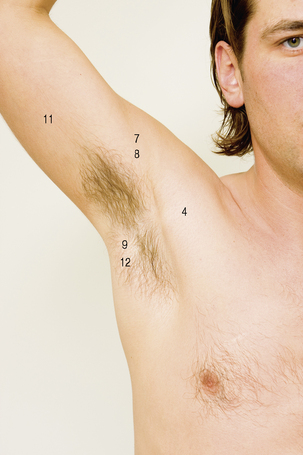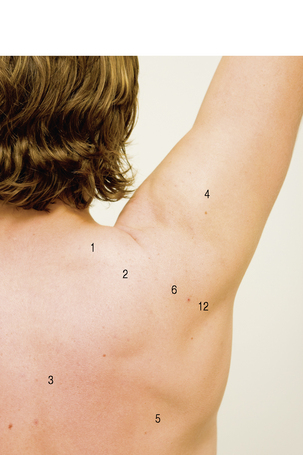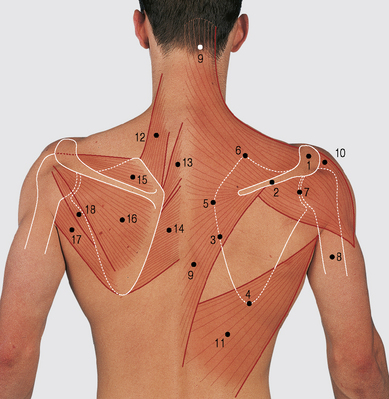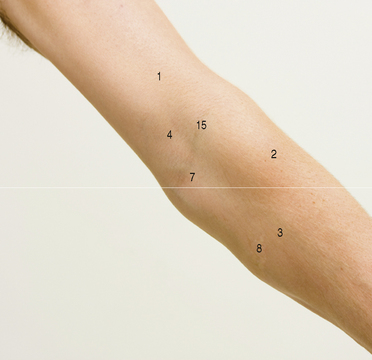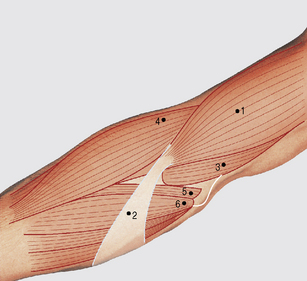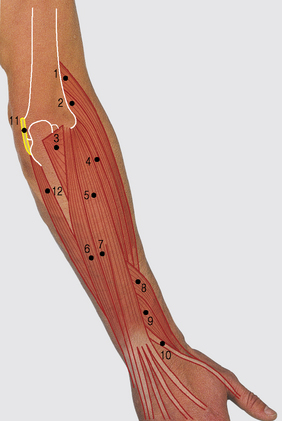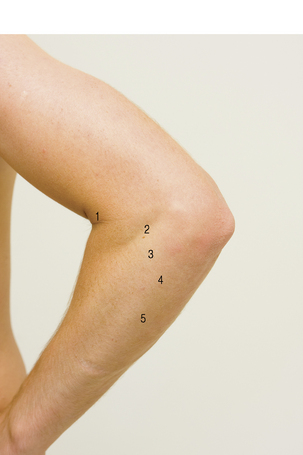Chapter 8 Shoulder and Elbow
The gleno-humeral (shoulder) joint is one of the most mobile of all the joints in the body. It is this mobility that predisposes the shoulder joint to injury, both acute and chronic, and heightens the joint’s dependency on muscular and capsular support. By contrast, the acromio-clavicular (AC) joint is less mobile and depends solely on ligaments for support.

• The inferior angle of the scapula (14) usually lies at the level of the seventhintercostal space. It is overlapped by the upper margin of the latissimus dorsi (10).
• The axillary nerve (17) runs transversely under cover of the deltoid (4) behindthe shaft of the humerus at a level 5-6 cm below the acromion (15).
• Latissimus dorsi (10) and teres major (9) form the lower boundary of theposterior wall of the axilla.

Shoulder joint: anterior aspect.1 Costoclavicular ligament. 2 Conoid ligament. 3 Trapezoidligament. 4 Coracohumeral ligament. 5 Short head of biceps.6 Coracobrachialis. 7 Pectoralis minor. 8 Long head ofbiceps. 9 Subscapularis. 10 Anterior capsule of shoulderjoint with opening of subscapular bursa. 11 Long head ofbiceps. 12 Latissimus dorsi. 13 Pectoralis major.
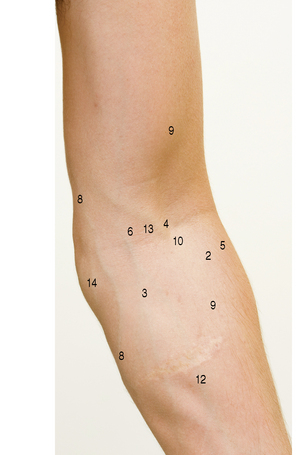
a. Left elbow from the front. There is an M-shaped pattern of superficial veins. Cephalic(9) and basilic (8) veins are joined by a mediancubital vein into which drain two small medianforearm veins. The order of the structures in thecubital fossa from lateral to medial is biceps tendon(4), brachial artery (13) and median nerve (6).
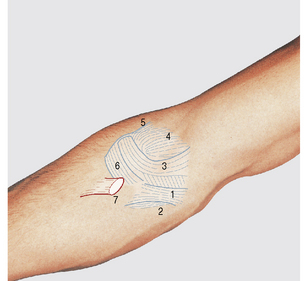
Elbow joint: anterior aspect. 1 Anterior bandof medial ligament. 2 Oblique band of medialligament. 3, 4 Anterior capsule. 5 Lateral ligament.6 Annular ligament. 7 Tendon of biceps
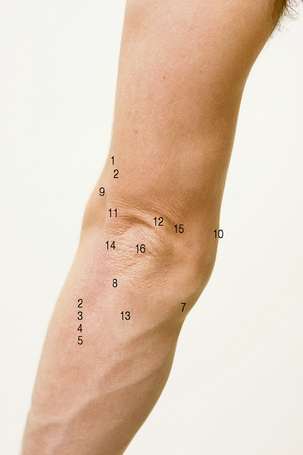
• With the elbow extended, the medial and lateral epicondyles and the olecranon are on the same levelbut with flexion of the elbow, the olecranon moves to a lower level.
• The subcutaneous position of the ulnar nerve behind the medial epicondyle makes it easily palpable.Here it can be easily injured, causing paraesthesia (tingling) in the distribution of the ulnar side of thehand. This area is commonly referred to as the ‘funny bone’.

